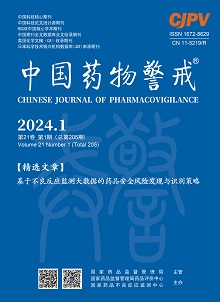|
|
Hepatotoxic components in Psoraleae Fructus based on high-content screening technology
SHANG Huiying, WEI Xue, CHENG Hongbo, MA Zengchun, TU Bodan, XIAO Chengrong, LIU Xian, GAO Yue
2024, 21(1):
74-82.
DOI: 10.19803/j.1672-8629.20230656
Objective To screen the potential hepatotoxic components in Psoraleae Fructus and explore the possible mechanisms using high-content screening technology. Methods The IC50 values of ten components in Psoraleae Fructus, including isobavachin, bavachinin, bavachin, isobavachalcone, 4’-O-methyl- bavachalcone, corylin, psoralen, ispsoralen, psoralidin, and bakuchiol were determined by CCK-8 cell viability assays. After treating HepG 2 cells with the same concentration of individual drug for 24 h, high-content screening was performed. The potential hepatotoxic components were revealed by evaluating the average fluorescence intensity of positive cells of four indicators, including reactive oxygen species, reduced glutathione, mitochondrial membrane potential and mitochondrial superoxide. Results CCK-8 cell viability assays showed that the IC50 values of isobavachin, bavachinin, bavachin, isobavachalcone, 4’-O-methyl-bavachalcone, corylin, ispsoralen, psoralidin, and bakuchiol were 52.69, 42.72, 83.63, 42.29, 57.43, 110.80, 1 420.00, 23.58 and 25.34 μmol·L-1, respectively. The high-content screening analysis showed that bavachinin, bavachin, isobavachalcone, psoralidin and bakuchiol could significantly increase the level of reactive oxygen species at the same concentration of 20 μmol·L-1; Isobavachalcone, 4’-O-methyl-bavachalcone, corylin, ispsoralen, psoralidin, bakuchiol can lead to a protective increase in the level of reduced glutathione; Additionally, isobavachalcone, psoralidin and bakuchiol could prominently decrease the level of mitochondrial membrane potential and promoted the accumulation of mitochondrial superoxide. Conclusion Isobavachalcone, psoralidin and bakuchiol were the main mitotoxic components in Psoraleae Fructus, which promoted Psoraleae Fructus-induced liver injuries. The specific mechanisms of the three components remains to be investigated in the future.
References |
Related Articles |
Metrics
|
